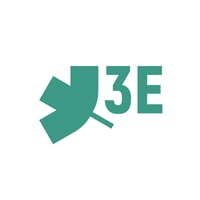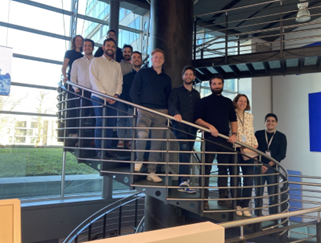FULLEST
Hybrid models for Flexible UtiLity scaLE STorage expansion

Facilitating utility-scale storage integration
The project aims at increasing the stability of the transmission grid under growing renewable energy capacity by focusing on the integration of utility-scale storage and on improving its long-term stability and operability.
By setting up collaborations between academic and industrial partners, the FULLEST project broadens the knowledge required for expanding such facilities.
An innovative battery digital twin model is developed based on fundamental and industrial research applied on 3 utility-scale case studies to evaluate system's flexibility.
The FULLEST project: optimising utility-scale battery operations
Developing a digital twin to predict & manage batteries' performance
The FULLEST project aims to increase the reliability of batteries for grid balancing and energy security. With the exponential implementation of renewable energy assets foreseen in the coming five years, grid congestion and imbalance will become a daily reality, leading to losses from an economic perspective and creating a barrier to energy security.
Storage assets can act as grid service to overcome these challenges, and the decarbonization strategy of Belgium includes a 6 significant growth in battery parks deployment in the next years for utility support. Although there are many ongoing developments and deployment plans, there is still little knowledge about the long-term operations and performance optimization of these assets.
The FULLEST consortium will develop a digital twin that predicts the performance of batteries and provides insights into the optimal application of utility-scale batteries, which is vital for the Belgian government to confidently roll out the deployment of batteries on a large scale. The optimal operation of utility-scale storage applications is an essential driver in the energy transition, and FULLEST caters to that global objective.
The objectives
- Objective 1 (O1): Categorization, logging and mapping profiles of anomalies in real-life operations. To construct a matrix for supporting the decision planning in energy systems, with ambition on assisting to future anomaly detection and data standardization in utility scale battery performance.
- Objective 2 (O2): Model for prediction of utility-scale battery lifetime, allowing to consolidate warranty decisions. Thanks to an accurate way to predict battery lifetime, second-life batteries are expected to enter the market more easily since they are often excluded due to warranty constraints.
- Objective 3 (O3): Operational decisions during battery lifetime minimizing downtime and extending the energy storage system's overall effectiveness and lifespan by scheduling proactive maintenance.
- Objective 4 (O4): Identification of the impact of the different grid balancing application profiles on the battery lifetime. By accurately predicting the impact of the different grid balancing services on the battery’s lifetime, asset owners can implement a more efficient battery steering strategy, leading to a better business case for utility-scale battery systems.
- Objective 5 (O5): An economic model for prediction of the battery degradation costs, to be considered in the dimensioning phase of a project.
Project partners






Study cases
Use case 1
Define profile types for flexibility services, to study effect on battery degradation
Focus: Batteries, PVs
Objective: Effect of flexibility services battery cycling profiles to investigate effects in battery lifetime
(ReVolta, Eneco)
Use case 2
Performance optimization
Focus: Battery usage optimization
Objective: Enable quick response to the critical KPIs (unexpected usage rates or state of charge levels that exceed the warranty limits of the battery provider)
(3E, ReVolta)
Use case 3
DT-based proactive maintenance
Focus: Battery proactive maintenance
Objective: Create a Digital twin (DT) to enable the proactive management of the assets (proactive repairs, replacements). Cost-effective strategies, DT will be used to model various maintenance strategies
(3E, ReVolta)
News & events
-
1st General Assembly meeting
On 6 October 2023, VUB welcomed the FULLEST consortium at their premises in Brussels. The primary objective of this meeting was to introduce the project partners and coordinate the kick-off activities.
-
Official kick-off meeting
On 28 November 2023, 3E welcomed the FULLEST consortium to their Brussels office. The primary goal of this meeting was to hold an initial discussion with the project officers from FOD - DG Energy and officially kick off project activities
-
2nd General Assembly
On 8 March 2024, the FULLEST project celebrated its six-month milestone! We convened at Sirris to review our progress thus far and align on next steps and future activities.
-
3rd General Assembly
On 29 August 2024, the FULLEST project reached its 11-month milestone! We convened at Revolta to review our progress and outline the path for the one-year project anniversary and the next 6 to 18M.

-
4th General Assembly
On 29 September 2025, the FULLEST project achieved its 22-month milestone. We convened in Brussels to review current progress and strategically outline the path for the final phase (in the next 6 months).

Contact: VUB BIC